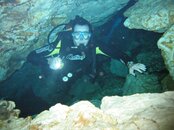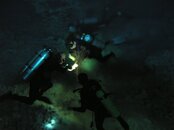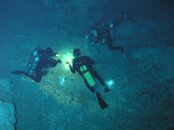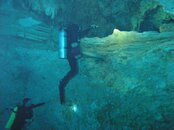Merry Christmas to all.
Although I am a relatively new diver, I do consider myself quite sensitive to environmental impact while underwater. I pursue precision buoyancy control and, especially on delicate reefs, avoid all contact (as opposed to most of the dive masters I've been with).
Although, obviously, not familiar with all diving faux pas, I didn't consider my contact with that particular limestone as an environmental transgression worthy of castigation. As a hiker and above water outdoorsman I come from a background where limited contact with the environment is not so frowned upon.
I've attached another pic in this cenote, navigating a space where zero rock contact is nearly impossible.
In any case, I appreciate those who posted in the spirit of education. I can take a little newbie criticism.
Regards,
Jason
Although I am a relatively new diver, I do consider myself quite sensitive to environmental impact while underwater. I pursue precision buoyancy control and, especially on delicate reefs, avoid all contact (as opposed to most of the dive masters I've been with).
Although, obviously, not familiar with all diving faux pas, I didn't consider my contact with that particular limestone as an environmental transgression worthy of castigation. As a hiker and above water outdoorsman I come from a background where limited contact with the environment is not so frowned upon.
I've attached another pic in this cenote, navigating a space where zero rock contact is nearly impossible.
In any case, I appreciate those who posted in the spirit of education. I can take a little newbie criticism.
Regards,
Jason








